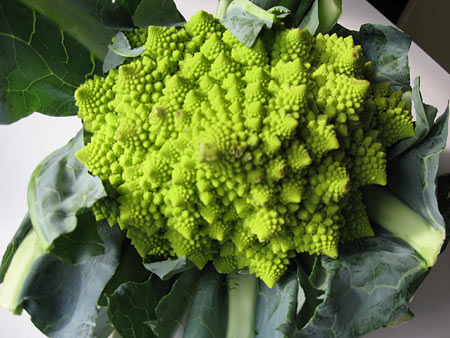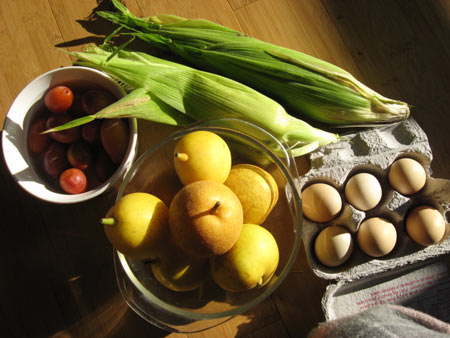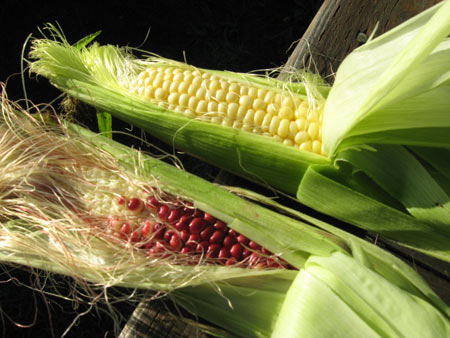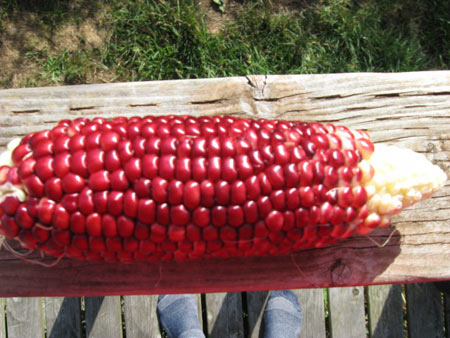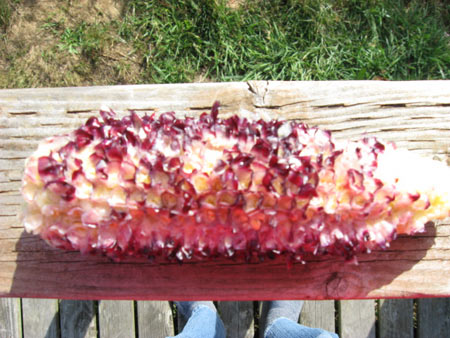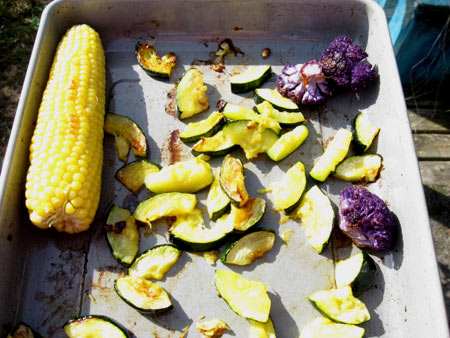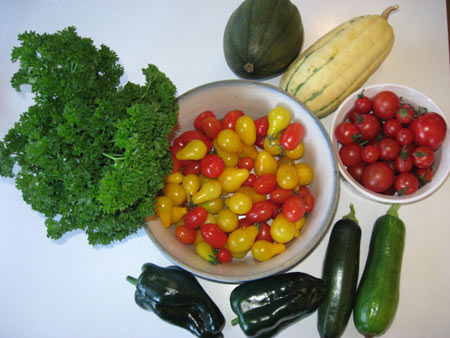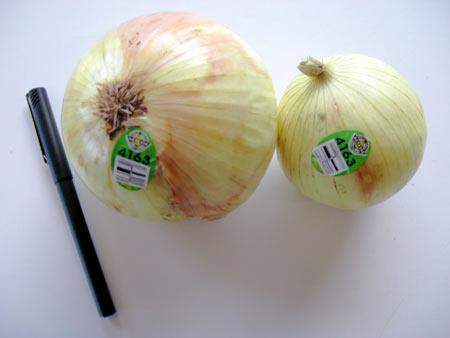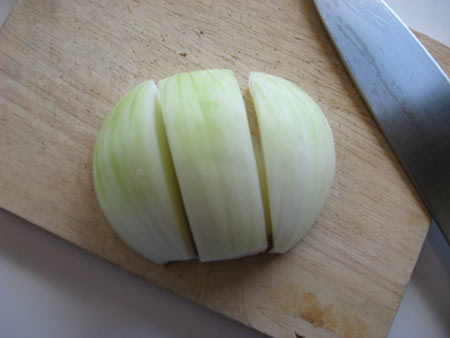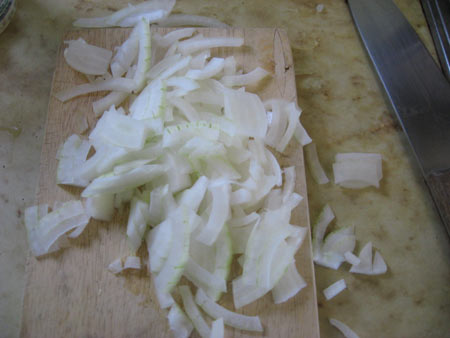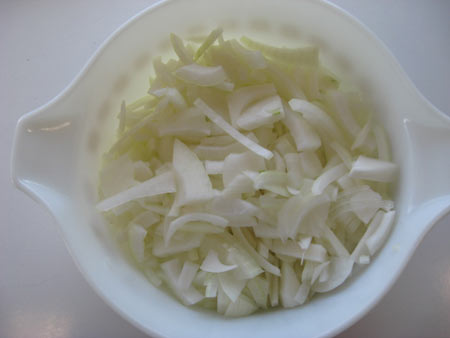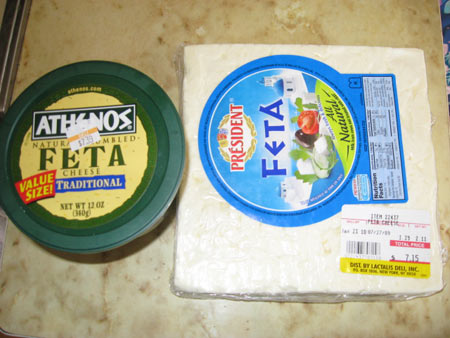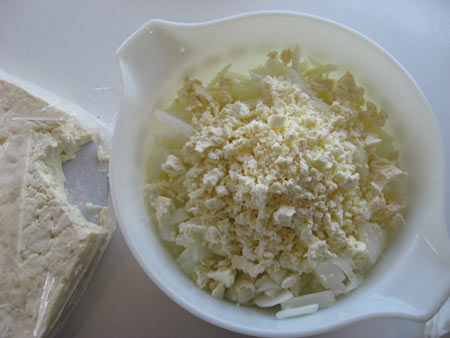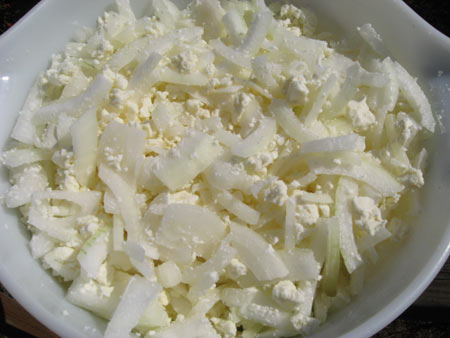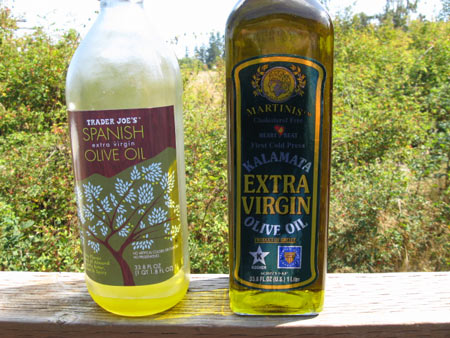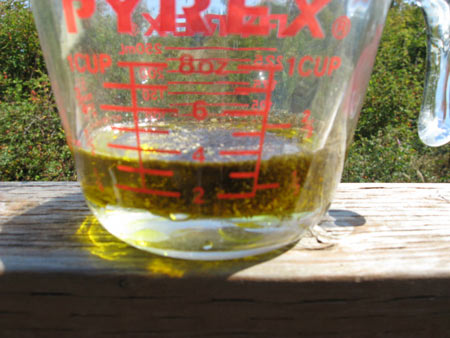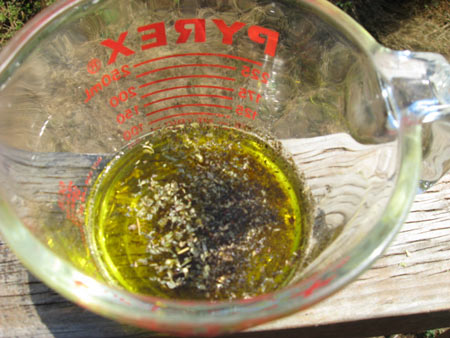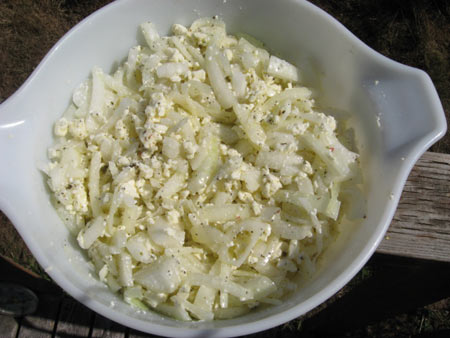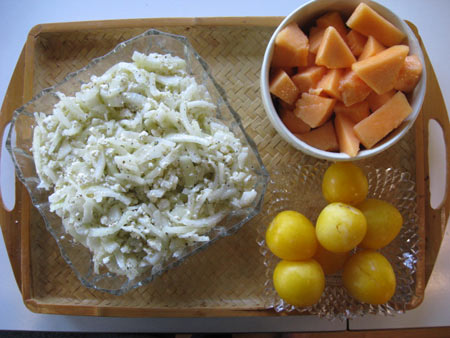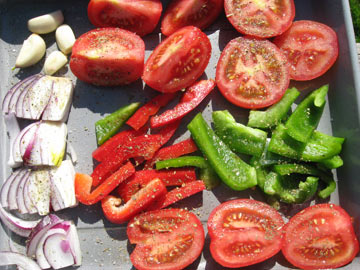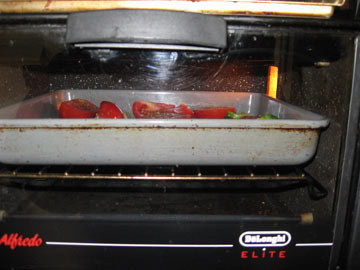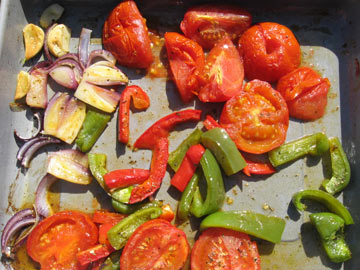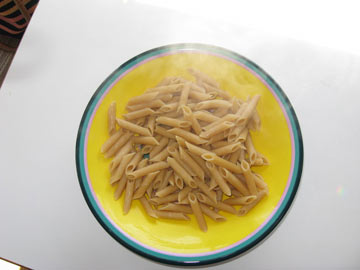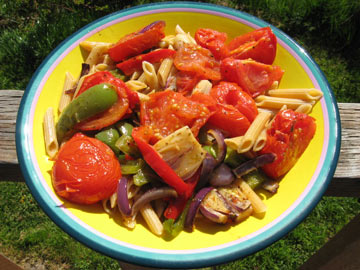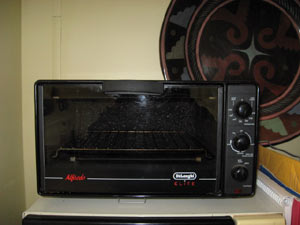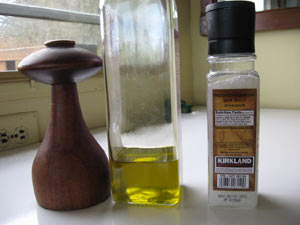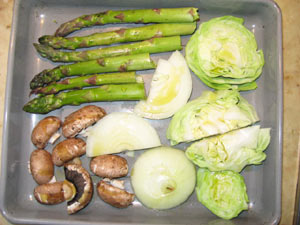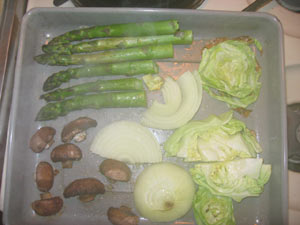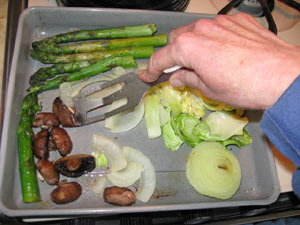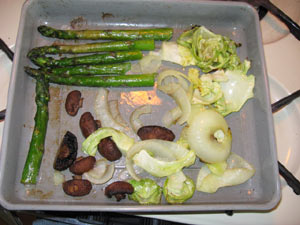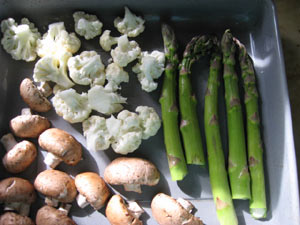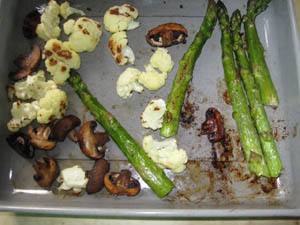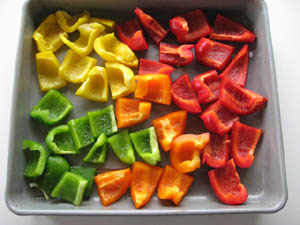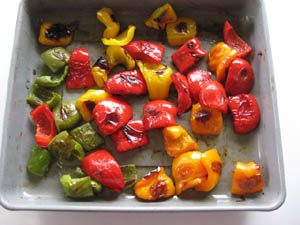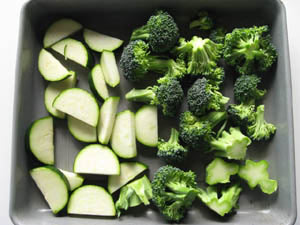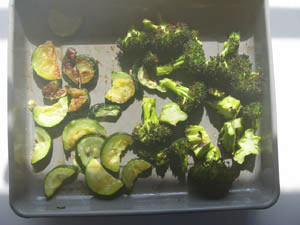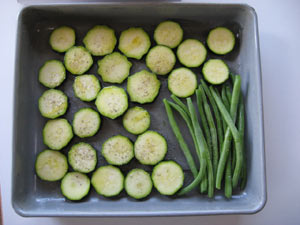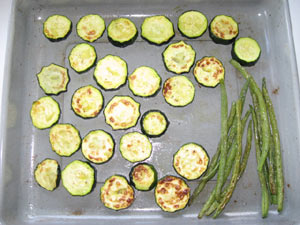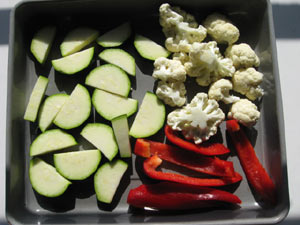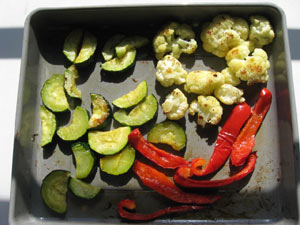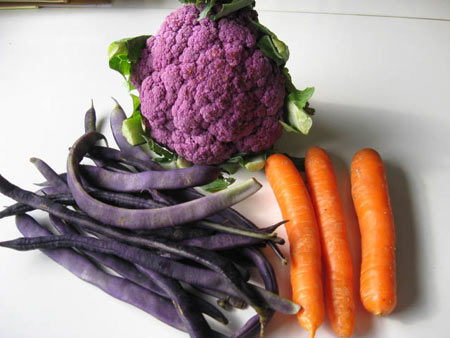Autumn is coming on fast even though it’s supposed to get to 90º in Salem OR today and I am both home and wearing shorts. This happens only about 12 days a year and usually for less than 6 hours each of those days. Call me White Legs. And as the weather gets colder I switch from dense salads in the fridge to soups so I’d better finish up this thread for the season.
Congratulations on making chicken salad or it’s fancied up sister, curried chicken salad. These are among the more challenging of dense salads because you have to cook the chicken. If you tried one of them, everything else will be a snap for you.
There are hundreds of dense salad variations. All you need are “solids” cut or broken into bite-sized pieces or smaller and a dressing to bind them together. I never measure amounts for these. I just put in what looks good or what I have on hand or enough to take for a crowd or enough to last me a few days. Here are some combos I make (and I’m starting again with basic chicken salad because I’m a teacher. “Tell them what you’re going to tell them. Tell them. Then tell them what you told them.” Multiple exposures work.)
BASIC CHICKEN (OR TURKEY) SALAD
cooked chicken breast
celery
red or green onion
a tart, crisp apple
Dressing= a little cottage cheese mashed with the back of a spoon in a small bowl until smoothish and add a little milk to it. (or whirl it in a small blender). You could also use a good mayo or yogurt cheese.
CURRIED VARIATION
To the above solids add some raisins or dried cranberries, currents or cherries. Frozen peas that have just been thawed and drained are also great to add. To the dressing add some curry powder. (This one really impresses people. Good for a pot luck or someone coming for lunch.)
BASIC TUNA SALAD
tuna from a can, broken up
celery
a little onion
dill relish
Dressing=mayo
SALMON VARIATION
Same as above except with salmon. I use leftover cooked salmon or Trader Joe’s
canned Wild Alaskan Pink Salmon which is a great value. I keep it in the larder. And instead of dill relish I add capers.
COMPANY TUNA VARIATION
Same as the basic but make sure you have albacore tuna (all I have around anyway) and add sliced hard boiled eggs For this I cut everything a little bigger and mix very lightly. Dressing = vinaigrette made with a light-colored vinegar
Beyond these fish and fowl combinations there are grain, legume, and pasta variations. Choose 1 or 2 from Column A (all should be cooked before putting them into the salads), 3 or 4 or 5 from Column B, and a vinaigrette.
Two things:
- This chart doesn’t have everything on it. It’s just a place to get you started.
- You could choose 5 or 4 things from Column B, skip Column A and be done with it.
| Column A |
Column B |
Vinaigrette |
-brown rice
-wild rice
-pasta (any kind from whole grain to rice noodles, and there are lots of fun shapes)
-bulgur
-lentils
– beans (black, white, red, garbanzos etc. canned and rinsed makes this an easy add. If you make them from scratch it’s cheaper and don’t overcook them)
-quinoa (KEEN-wah)
|
-red or green onion
-celery
-carrots
-broccoli
-cauliflower
-sweet peppers (green, red, orange)
-mushrooms
-peas (thawed if frozen)
-corn (thawed if frozen)
-fresh parsley
-fresh cilantro
-nuts (almonds, walnuts, cashews, pecans, etc.)
-green beans (lightly steamed)
-grapes
-apple
-cucumbers
-tomatoes
-jicama
-raisins or other dried fruit (e.g. cranberries, currants or blueberries) |
BASIC RECIPE
-1/3 to ½ cup oil
-1 to 3 Tbsp acid (vinegar or lemon or lime juice)
-salt and pepper
-herbs and spices of choice
and usually, one or more of the following:
-finely minced aromatics (garlic, scallions)
– stone-ground mustard
-a tsp of sweetener (sugar, honey, maple syrup, ginger syrup)
Put it all in a small jar (pint or so) with a screw-on top and shake it up.
|
THE VINAIGRETTE
So easy, fast, cheap and delicious that I forget why we have bottled dressing. Even mayonnaise is a variation of it: acid plus oil with a few seasonings.
The Acid
I just checked my stash. I have 5 kinds of vinegar: balsamic, rice, red wine, apple cider, and sherry.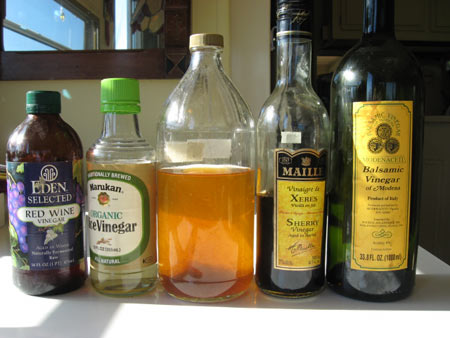
I keep a sixth type, white distilled vinegar, under the sink for cleaning but I don’t use it in food very often. Vinegar keeps forever in the cupboard. If I had to choose only one it would be organic apple cider vinegar. Balsamic is very distinct in flavor and it would be my second choice. Lemon or lime juice (freshly squeezed) are fresh-tasting and lively and can be used alone or combined with vinegar or one another.
The Oil
I have 5 types on hand: extra virgin olive oil, canola, toasted sesame, chili oil and coconut, all in the refrigerator except for the coconut which is solid at room temperature and a few ounces of the olive oil in a little dispenser bottle on the counter because it’s my everyday oil.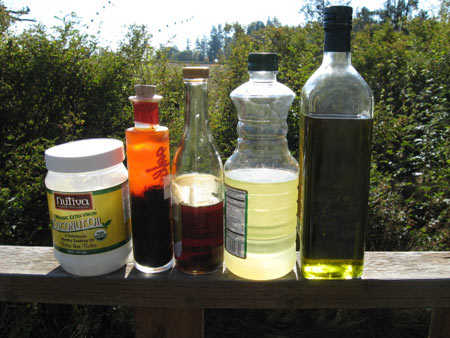
The canola (which is basically flavorless) is for baking or for part of a vinaigrette oil. I use the coconut oil (organic) primarily as a nighttime hand and face cream. I have a small jar of it next to the bed that I refill from the big jar. It’s incredible! Cheap, cheap, healthy, absorbs into the skin quickly and smells clean and wonderful. It’s also good for stir fry, especially Thai or other Southeast Asian-style dishes. The toasted sesame oil is both perishable and very strong. I use it in oriental style stir fries sometimes and in some marinades. The chili oil is VERY FIERY. I use only a drop here and there in a dish if I want to heat it up without changing the other flavors.
The standard ratio of oil to vinegar or acid is 3 to 1: 3 parts oil, 1 part acid. But you can vary that according to your taste. You might try 2:1 or 4:1. Experiment. You can see pictures of the process of making a lemon vinaigrette in “A refreshing slaw.”
A couple of tried and true salads to inspire you.
DARCY’S FAVORITE DENSE VEGGIES
broccoli
grapes (red are the prettiest. I cut them in half)
celery
bacon bits (a few crisp strips crumbled or the already cooked ones)
red onion
almonds
Dressing: small amount of mayo or vinaigrette
FAVORITE PEA SALAD THAT’S EXPENSIVE IN THE DELI
big bag of frozen green peas, thawed and drained
red or green onion
bacon bits (again, real, crumbled, crisp bacon. I know it’s not great for health but I don’t eat slabs of it, I’m not a food Nazi and I was raised by Austro-Hungarians. That and Norwegian Great-Uncle Art used to smoke bacon especially for us but that’s a story for another day.)
small cubes of cheddar (Optional, but then everything is for these salads. They tend to sog up a little after a day in the fridge.)
Dressing = a little mayo
The purpose of this post was, once again, to have you start thinking differently about food preparation. You don’t follow a “recipe.” Instead, you learn a technique (like roasting veggies), play with it a few times, and it becomes your skill that you can use without even thinking.
Quick! look in your fridge. What combination can you create today? Now do it. You can’t “make a mistake.” It’s just food, not dynamite.

